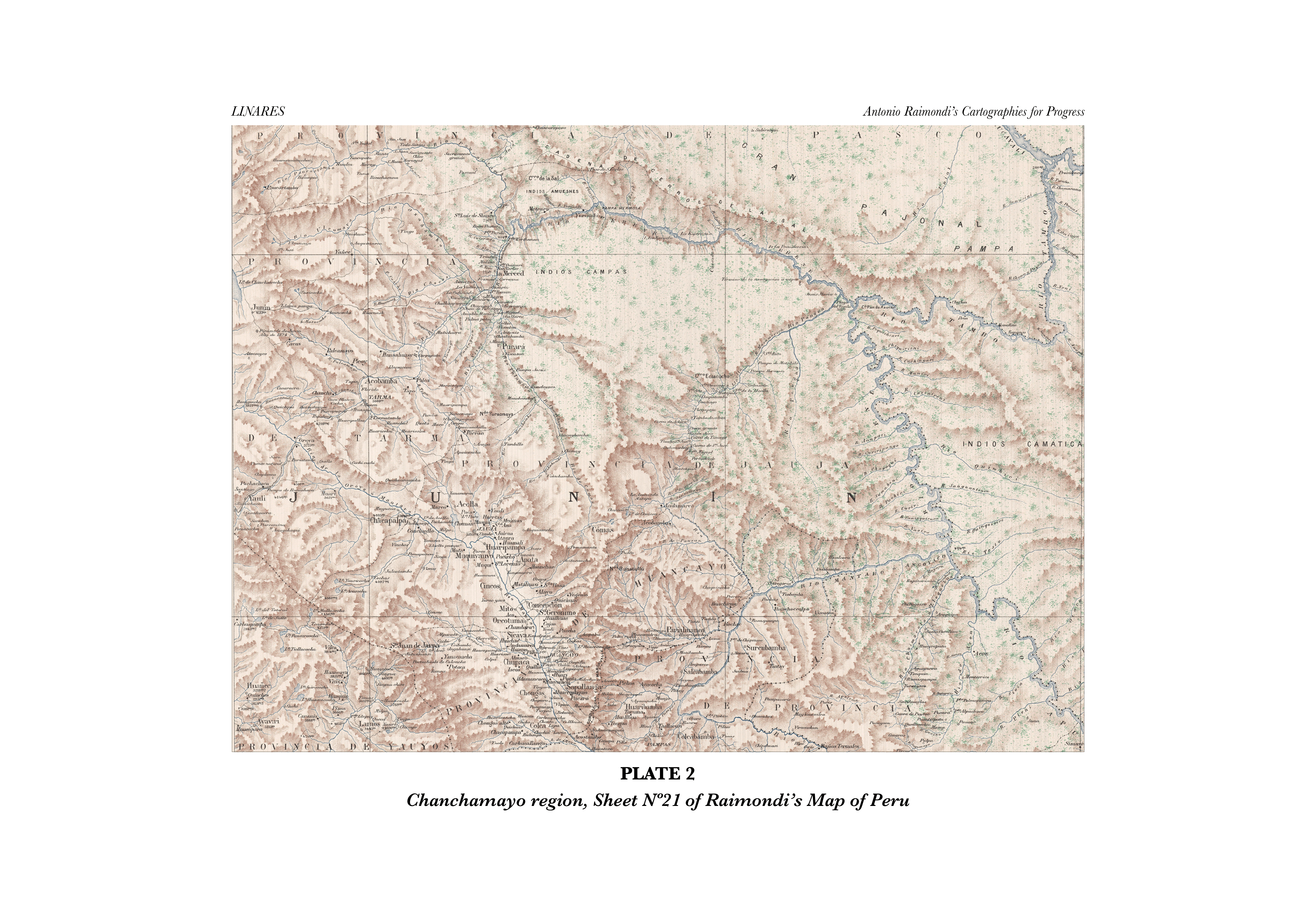CONTESTED CARTOGRAPHIES: CHANCHAMAYO
Part of Antonio Raimondi’s Cartographies of Progress
Thesis to obtain the degree of MSc. in Critical, Curatorial and Conceptual Practices in Architecture
Advisor: Prof. Mabel O. Wilson
Raimondi’s Map of Peru was the result of almost twenty years of expeditions across the country during which he registered information in diaries, drawings, and collections. While carefully reading his map and unpacking his archive, new layers of information appear that reveal the violence of the encounter with indigenous populations and bring forward the omissions and highlights of the map. I attempt to contest the neocolonial nature of Raimondi’s scientific project by using contemporaneous scholarship in anthropology, and indigenous knowledge and history. In this act, I intervene his map, de-layering it, and producing new cartographies meant to be added to Raimondi’s archive to complement it and include otherwise silenced Andean and Amazonian cartographic knowledge. These counter-cartographies follow the format of nineteenth-century atlas’ plates, which speaks to the materiality in which this knowledge was communicated. This translation allows for indigenous knowledge to circulate among a wider public and gain institutional legitimacy, thus facilitating its inclusion into the nation’s imaginary.
Raimondi’s work partook in the government’s modernization project, which in addition to promoting communication infrastructure and social homogenization, sought expansion towards the Amazon. Thus, the Amazon regions became the focus of government interests and Raimondi’s scientific project. During the period of colonization and the beginning of the Republic, the Amazon had remained outside of the boundary of the nation, despite being inside its borders, fueling the desire for these territories’ wealth in natural and human resources. In this context, the regions of Chanchamayo and Loreto exemplified contested sites that Raimondi highly documented and around which he created a discourse that subscribed to the government’s vision.
Thesis to obtain the degree of MSc. in Critical, Curatorial and Conceptual Practices in Architecture
Advisor: Prof. Mabel O. Wilson
Raimondi’s Map of Peru was the result of almost twenty years of expeditions across the country during which he registered information in diaries, drawings, and collections. While carefully reading his map and unpacking his archive, new layers of information appear that reveal the violence of the encounter with indigenous populations and bring forward the omissions and highlights of the map. I attempt to contest the neocolonial nature of Raimondi’s scientific project by using contemporaneous scholarship in anthropology, and indigenous knowledge and history. In this act, I intervene his map, de-layering it, and producing new cartographies meant to be added to Raimondi’s archive to complement it and include otherwise silenced Andean and Amazonian cartographic knowledge. These counter-cartographies follow the format of nineteenth-century atlas’ plates, which speaks to the materiality in which this knowledge was communicated. This translation allows for indigenous knowledge to circulate among a wider public and gain institutional legitimacy, thus facilitating its inclusion into the nation’s imaginary.
Raimondi’s work partook in the government’s modernization project, which in addition to promoting communication infrastructure and social homogenization, sought expansion towards the Amazon. Thus, the Amazon regions became the focus of government interests and Raimondi’s scientific project. During the period of colonization and the beginning of the Republic, the Amazon had remained outside of the boundary of the nation, despite being inside its borders, fueling the desire for these territories’ wealth in natural and human resources. In this context, the regions of Chanchamayo and Loreto exemplified contested sites that Raimondi highly documented and around which he created a discourse that subscribed to the government’s vision.





